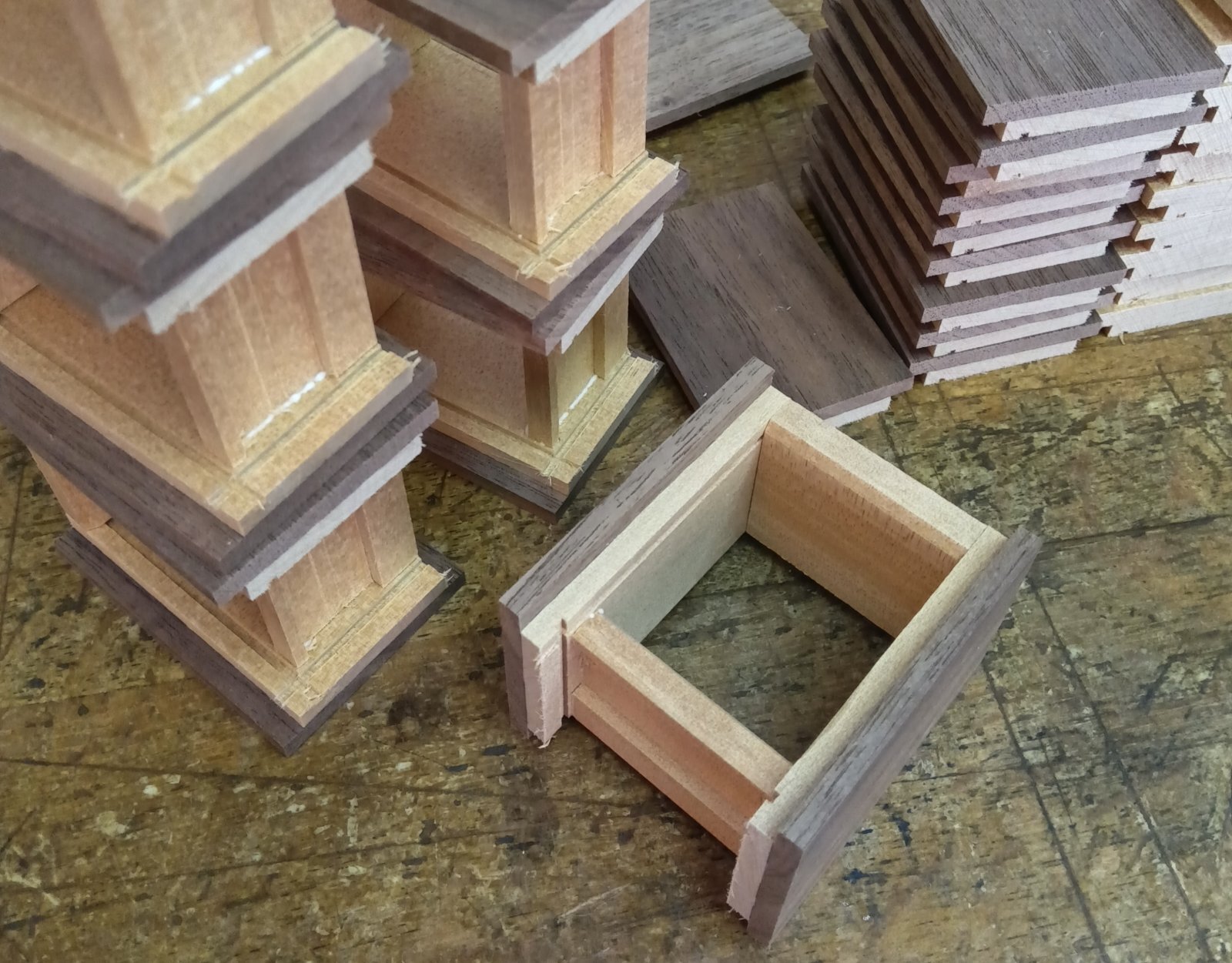7-step boxes
This morning, it was cloudy for the first time in a while. It's still around 35°C, but without the strong sunlight, it feels cooler indoors when using the air conditioner.
Because of the heat, many areas in Japan have been hit by heavy rainstorms. The heat itself is tough, but water damage can be just as frightening.
Today, I’m working on several tasks at once, as usual, and I’ve also started assembling the 2-sun box. It’s a 7-step mechanism, so it uses a single Kannuki (slide key) panel on one side.
Today, I attached the parts to the assembled panel, and tomorrow I plan to make the Aruki panels. Since the 7-step type operates with just two Aruki panels (moving panels), it doesn’t take as long to complete.
And as you might notice from the photo — yes, I’m using that method again this time!..haha😊
Lately, I’ve been making a lot of 7-step boxes — both the 2-sun cube and this regular 2-sun box. The main reason is that I was thinking about creating something that could also sell well on Japanese websites. Of course, I also plan to sell them here on this site.
At the moment, though, selling within Japan has become quite difficult. These days, the market for traditional crafts like this in Japan relies heavily on international tourists. It’s hard to expect people living in Japan to buy them — unless they’re extremely cheap... that’s the feeling I get.
A common thing that comes up in conversations with other Japanese people is:
“You can get something like that at a 100-yen shop.”
In other words, Japan’s 100-yen stores carry a huge variety of everyday items, and you can get almost everything you need there. I actually shop at them quite often myself.
After the pandemic, more and more items in 100-yen shops are now sold for ¥300 or ¥500, but there are still plenty of items available for just ¥100. You can even find small souvenirs or uniquely Japanese items, which is why these stores are also popular among tourists from overseas. Some of them even sell little toys and puzzles — although not as many as they used to.
Because of that, it’s very rare for people in Japan to spend several thousand yen on handcrafted items like these. The trend is all about keeping things cheap, so it’s tough to come up with an effective sales strategy.
So, for now, my approach in Japan is not to aim for high sales numbers, but rather to let people know that these kinds of traditional crafts exist. That feels like the right direction to take for the time being.
Because of the heat, many areas in Japan have been hit by heavy rainstorms. The heat itself is tough, but water damage can be just as frightening.
Today, I’m working on several tasks at once, as usual, and I’ve also started assembling the 2-sun box. It’s a 7-step mechanism, so it uses a single Kannuki (slide key) panel on one side.
Today, I attached the parts to the assembled panel, and tomorrow I plan to make the Aruki panels. Since the 7-step type operates with just two Aruki panels (moving panels), it doesn’t take as long to complete.
And as you might notice from the photo — yes, I’m using that method again this time!..haha😊
Lately, I’ve been making a lot of 7-step boxes — both the 2-sun cube and this regular 2-sun box. The main reason is that I was thinking about creating something that could also sell well on Japanese websites. Of course, I also plan to sell them here on this site.
At the moment, though, selling within Japan has become quite difficult. These days, the market for traditional crafts like this in Japan relies heavily on international tourists. It’s hard to expect people living in Japan to buy them — unless they’re extremely cheap... that’s the feeling I get.
A common thing that comes up in conversations with other Japanese people is:
“You can get something like that at a 100-yen shop.”
In other words, Japan’s 100-yen stores carry a huge variety of everyday items, and you can get almost everything you need there. I actually shop at them quite often myself.
After the pandemic, more and more items in 100-yen shops are now sold for ¥300 or ¥500, but there are still plenty of items available for just ¥100. You can even find small souvenirs or uniquely Japanese items, which is why these stores are also popular among tourists from overseas. Some of them even sell little toys and puzzles — although not as many as they used to.
Because of that, it’s very rare for people in Japan to spend several thousand yen on handcrafted items like these. The trend is all about keeping things cheap, so it’s tough to come up with an effective sales strategy.
So, for now, my approach in Japan is not to aim for high sales numbers, but rather to let people know that these kinds of traditional crafts exist. That feels like the right direction to take for the time being.
